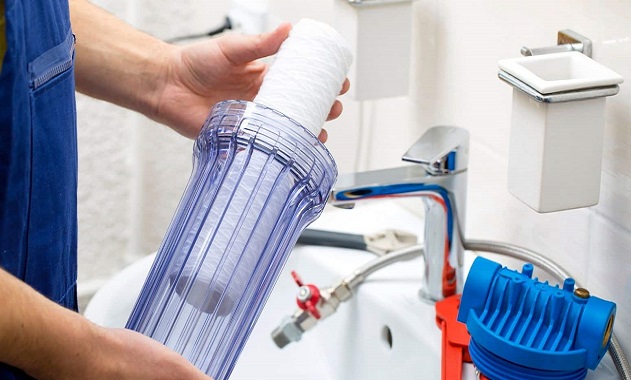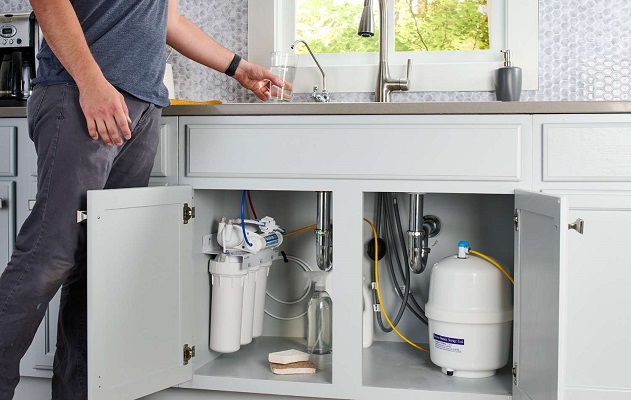Different Types of Water Filters and How They Work
Water Filters remove contaminants such as sediment, taste and odour, hardness, and microorganisms from water, resulting in higher quality water. From producing better-tasting potable water to more specialised applications like brewing coffee and making crystal-clear ice, consider a state-of-the-art approved and reliable supplier of a vast selection of filters and cartridges to address a variety of water-related issues from the puretec water filter range available online!
The Five Types of Water Filters
There are five categories of water, depending on the application, i.e. what you’re attempting to remove or, in some cases, block.
Mechanical

Mechanical filtration consists of physically removing sediment, grime, and other particles from water using a barrier. Mechanical puretec filters can range from a simple mesh that removes large particles to a ceramic filter with incredibly intricate pores for ultra-fine filtration of pathogenic organisms.
A filter that employs mechanical filtration will typically be assigned a micron rating that indicates how effective the filter is at removing particulates of a particular size. Commonly observed ratings on puretec water filters include:
- 5 microns – Will eradicate the majority of visible particles.
- 1 micron – Will filter out particles too minuscule to observe without a microscope.
- 0.5 microns – Cysts (giardia and cryptosporidium) are eliminated.
Absorption
Absorption in water filters is typically carried out by carbon, which is highly effective at collecting water-borne contaminants. Carbon readily absorbs impurities due to its vast internal surface area, which is densely packed with nooks and crannies that can capture chemical impurities such as chlorine.
Most household filters contain granular activated carbon (GAC), which absorbs undesirable flavours and odours. In general, carbon block elements in more expensive filters are more effective and typically bear a micron rating for particle removal. Carbon filters can be made from a variety of substances, including wood and coconut shell, with coconut shell filters being more efficient but more expensive.
Sequestration
Sequestration is the chemical separation of a substance. Commonly used in scale inhibiting filters to sequester the calcium and magnesium minerals that cause limescale and corrosion is polyphosphate of food grade. However, polyphosphate is typically added in very small quantities, and it inhibits scale growth rather than eliminating it. This means that polyphosphate does not dilute water, but rather prevents minerals from forming scale on surfaces they come into contact with by retaining them in solution.
Due to the presence of stony minerals in the water, scale inhibition is not appropriate for all applications. In water sources with alkalinity levels of 180ppm or more (very hard water) as well as applications where water is kept at a constant temperature of 95°C or more, ion exchange water softening is typically recommended.
Ion Exchange
Ion exchange is a method for softening hard water by exchanging the magnesium and calcium ions present in hard water for sodium or hydrogen ions. Ion exchange, unlike scale inhibition, physically removes hard minerals, reducing limescale and rendering water suitable for applications where it is maintained at a constant high temperature, such as in commercial coffee machines.
Typically, ion exchange is performed with ion exchange resin, which typically consists of tiny beads. Some water softeners utilise a similar form of resin, and in the case of a water softener, the resin uses sodium ions that must be periodically recharged to prevent the resin from becoming ineffective. As water filters are typically sealed devices, you would simply replace the filter; however, calcium treatment devices (CTUs) may be returned to the supplier and regenerated.
There is a legal limit of 200 milligrams per litre for the quantity of salt (sodium) that can be present in drinking water, which precludes the use of resins that utilise sodium ions. As sodium ion exchange raises salt concentrations, hydrogen-based ion exchange resin is the optimal choice for filter media.
Reverse Osmosis

Reverse osmosis (RO) is the process of removing dissolved inorganic compounds (such as magnesium and calcium ions) from water by pushing them through a membrane that is semipermeable under pressure so that most contaminants are left behind.
Reverse osmosis is a highly effective method of water purification that is typically combined with a number of other filters, such as a mechanical (sediment) filter and an absorption (activated carbon) filter, in order to return water with minimal impurities. Reverse osmosis systems use water pressure to force water through the membrane, eliminating the need for electricity.
However, a certain quantity of wastewater is produced and must be drained. The additional filters involved in multi-stage water filtration can make a reverse osmosis unit cost more than other purification methods. However, in applications where 99.9% pure water is required, reverse osmosis provides the highest level of filtration available and is increasingly used to treat water used to make coffee.
Combination
Each filtration method has limitations regarding what it can remove; consequently, most water filters and filtration systems use a combination of filtration methods to accomplish a particular level of water purity. As an illustration, household water container filters typically employ mechanical, absorption, and ion exchange, whereas inline filters employ mechanical and absorption, with the addition of sequestration if the filter is meant to prevent scale.
Depending on the number of stages in the RO system, mechanical, absorption, and reverse osmosis processes may be utilised by reverse osmosis systems. By understanding the five different methods of water filtration and how they can be combined, it should be simpler to determine what type of filters are required for a particular use.



